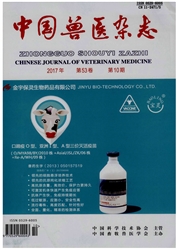

 中文摘要:
中文摘要:
本研究对潍坊、烟台、威海和青岛地区的疑似水貂病毒性肠炎病毒(MEV)粪便样品进行检测,并在9份样品QD1309、QD1407、WH1407、WH1408、WH1508、WH1509、WF1310、WF1408、YT1408中扩增出VP2基因,和Gen Bank上已经公布的4株MEV参考株的VP2基因进行序列分析,结果显示,13份MEV VP2基因的核苷酸和氨基酸均有较高的同源性,分别为97.5%99.8%和96.9%99.7%。系统发育进化树表明,QD1309、YT1408、MEV-Beregovoj-Bincentr(MEV-BB)、MEV-e属于同一个组群,不同毒株主要在第5、62、87、101、232、236、279、300、534位氨基酸发生了替换。本研究对水貂细小病毒流行株的主要衣壳蛋白VP2的编码蛋白进行遗传变异分析,为更好地预防和控制貂源细小病毒提供基础。
 英文摘要:
英文摘要:
We tested samples of suspected parvovirus feces in Weifang,Weihai,Yantai,and Qingdao and got 9 VP2 genes from QD1309,QD1407,WH1407,WH1408,WH1508,WH1509,WF1310,WF1408,and YT1408. We compared them with 4 MEV VP2 genes out or in our country from Gen Bank. Results showed that the 13 MEV VP2 genes had high homology of nucleotide and amino acids,which were 97. 5% 99. 8% and 96. 9% 99. 7%. Phylogenetic analysis showed that QD1309,YT1408,MEV-BB,and MEVe belonged to the same group,and the difference for different strains were mainly at the site of 5,62,87,101,232,236,279,300,and534 amino acid.
 同期刊论文项目
同期刊论文项目
 同项目期刊论文
同项目期刊论文
 期刊信息
期刊信息
